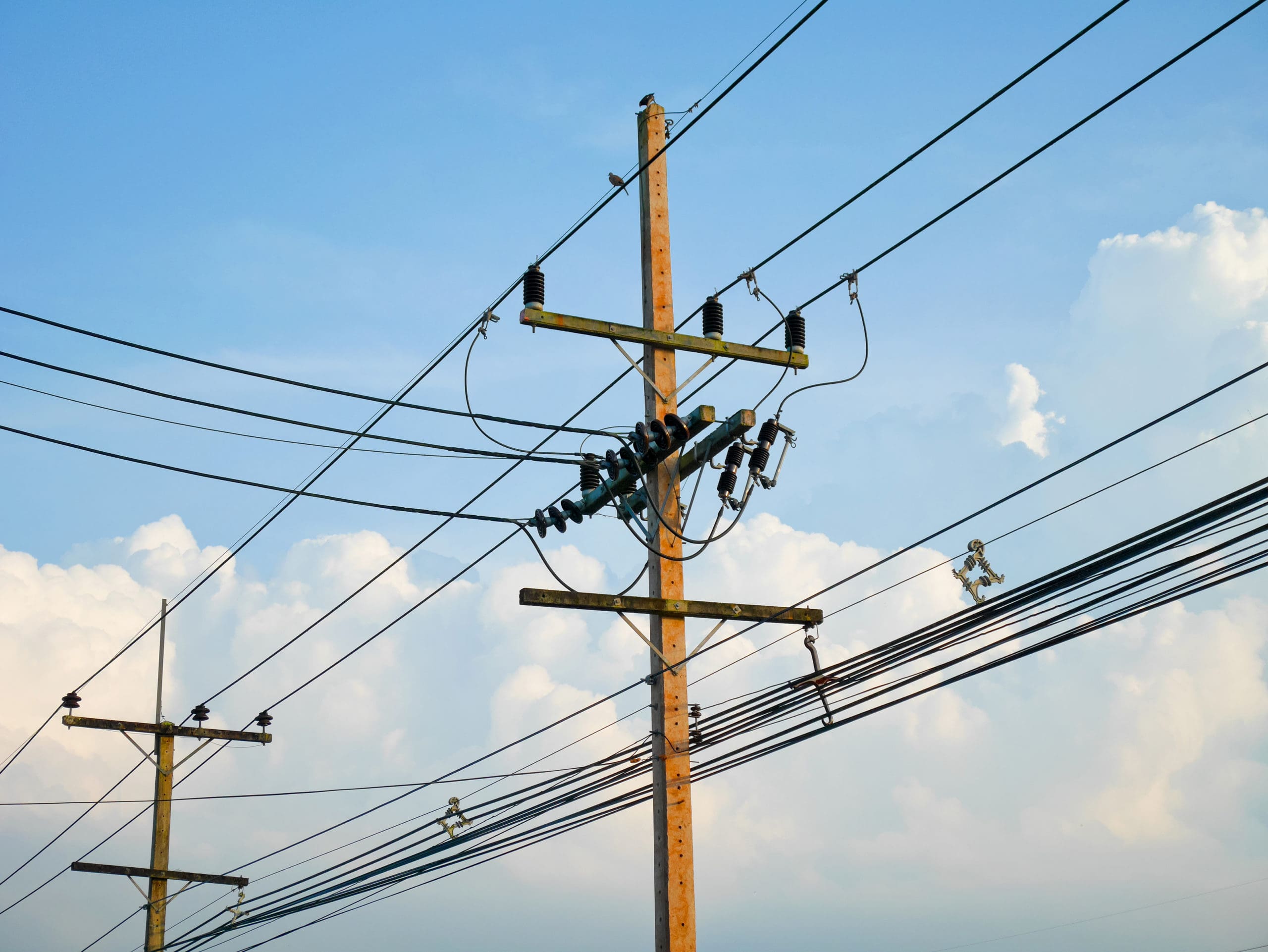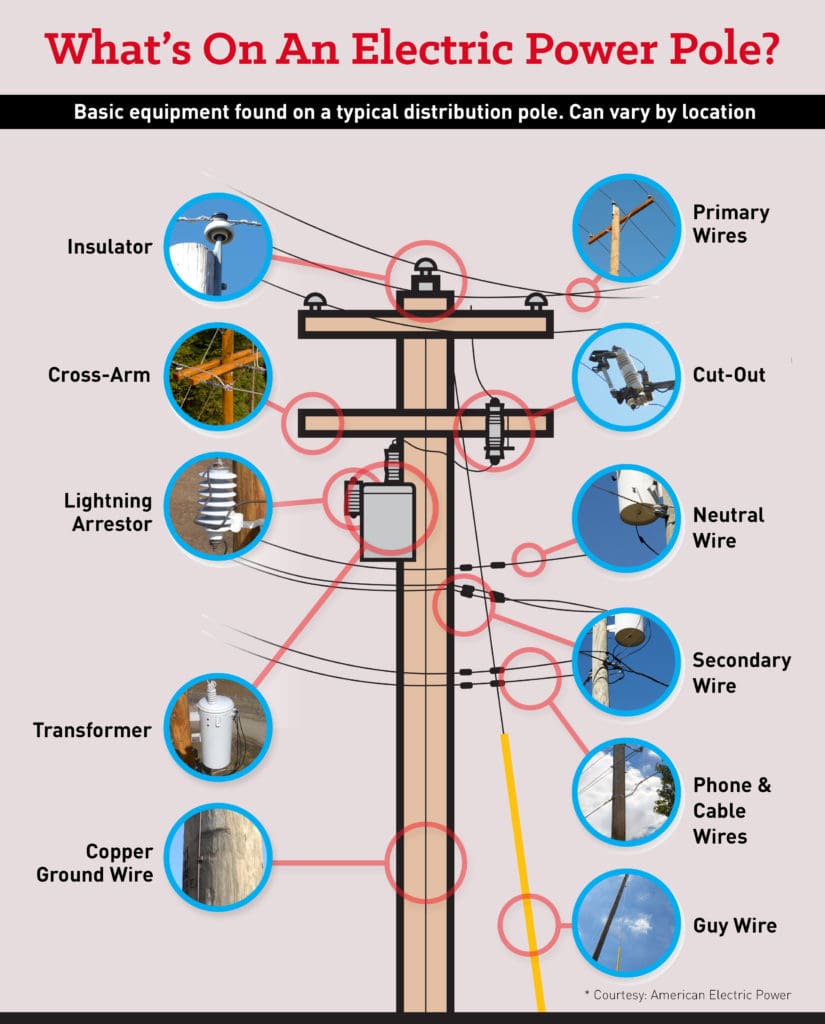
One of the most important lifelines of modern civilization is electricity. However, we are so used to seeing electric distribution poles along streets and roads, we rarely stop to look at them closely or wonder what they do to supply power to our homes and offices. Electric distribution poles can be an extremely interesting study. The 50-ft tall wooden structures with masses of running wires aren’t necessarily aesthetically pleasing, but once you learn the role they play in our lives, you can’t help but be grateful for their presence.
In this article (courtesy: American Electric Power), we will deconstruct electric distribution poles, from top to bottom, in as simplified a way as we can. Check out the accompanying image for visual reference as you read.
# 1: Primary Wires
At the top of the pole are the primary or main wires. These wires connect to nearby substations and can carry between 7,200 – 34,500 volts, with 12,000 volts being most common.
There is only one wire if the electricity is going to a residence. For businesses and offices there are three wires, as these institutions consume more energy.
A structure called a cross-arm supports the primary wires. Insulators hold these in place and keep both the cross-arm and the pole from becoming energized by the wires.
# 2: Lightning Arrestors
Below the primary wires are cylindrical objects known as lightning arrestors. These protect the electric pole and all its parts from damage caused by lightning.
# 3: Cut-Outs
At about the same level as a lightening arrestor is the cut-out. A cut-out is similar to a fuse in your home. It protects the pole and its equipment from too much electricity. If any object, be it a tree limb or a bird or a squirrel, comes in contact with a wire, the cut-out drops open to visually indicate that there is a problem with that section of the line. If you ever see a cut-out open, call your power company.
# 4: Transformers
Below the cutout is a piece of equipment that looks like a can called a transformer. It takes the electricity from the wires at the top of the pole and steps it down to the lower levels needed for a home or a business.
# 5: Neutral Wires
Under the transformer is a copper wire called the neutral wire. This does not mean that it is safe to touch! The neutral wire is a return line that goes back to the substation and helps to balance the amount of electricity out on the system. Without this neutral wire, our appliances could get too much or too little electricity, which would cause damage.
# 6: Secondary Wires
Below the neutral wire is the secondary wire. After the electricity passes through the pole-mounted transformer, it is carried in the secondary wire at the lower level of 120 or 240 volts.
# 7: Phone and Cable Wires
Under the secondary wires are the phone and cable wires. They are generally the lowest wires on the pole. Phone and cable wires are still not safe to touch because they could become energized if, for example, a fallen power line comes in contact with them.
# 8: Copper Grounds
At the bottom of the pole are copper grounds. These are protective pieces of equipment and direct electricity into the earth.
If there were ever to be any problems with equipment on the pole, the electricity would be attracted to the copper grounds, because they are a conductive material which would pass it to the earth.
# 9: Guy Wires
Lastly, on some poles, depending on location, there could be another larger wire running off at an angle into the ground called a guy wire. These are used to support the poles. To protect people and animals walking past guy wires, they usually are covered with an insulator. The lower end, where the cable enters the ground, is often also encased in a sheath of yellow plastic reflector to make it more visible.
Shop Electric Utility Equipment
Safety Tips
Now let’s talk about some safety hazards that distribution poles can cause:
- Electricity never shuts off, so if a wire breaks or falls down, the electricity is still looking for a path to ground. A human body is a very good path to ground, so avoid all fallen wires. Do not touch them under any circumstances. Call 911 or your phone company immediately if you see fallen wires. Also do not touch anyone or anything the line may be touching. Objects can become energized by just contacting a downed power line. That includes phone and cable wires. Remember that electric wires aren’t insulated like power cords for home appliances. What may appear to be some sort of insulation is actually weather-proofing material.
- Always be aware of the presence of overhead lines. Keep ladders, TV antennas, gardening equipment, satellite dishes, and any other equipment away from them. Maintain a distance of at least 10 feet at all times.
- If your vehicle comes in contact with a utility pole or wire, do not step out of the car. Call 911 and alert others to stay away from your vehicle. You are protected when you are inside the vehicle, but the outside of your vehicle could have electricity passing through it. If you must exit the vehicle because of fire or some other imminent danger, remove all loose items of clothing and jump clear of the vehicle. Avoid touching the car and the ground at the same time. Land with both feet together, and cautiously step away from the car keeping both feet as close together as possible.
* Source: American Electric Power


